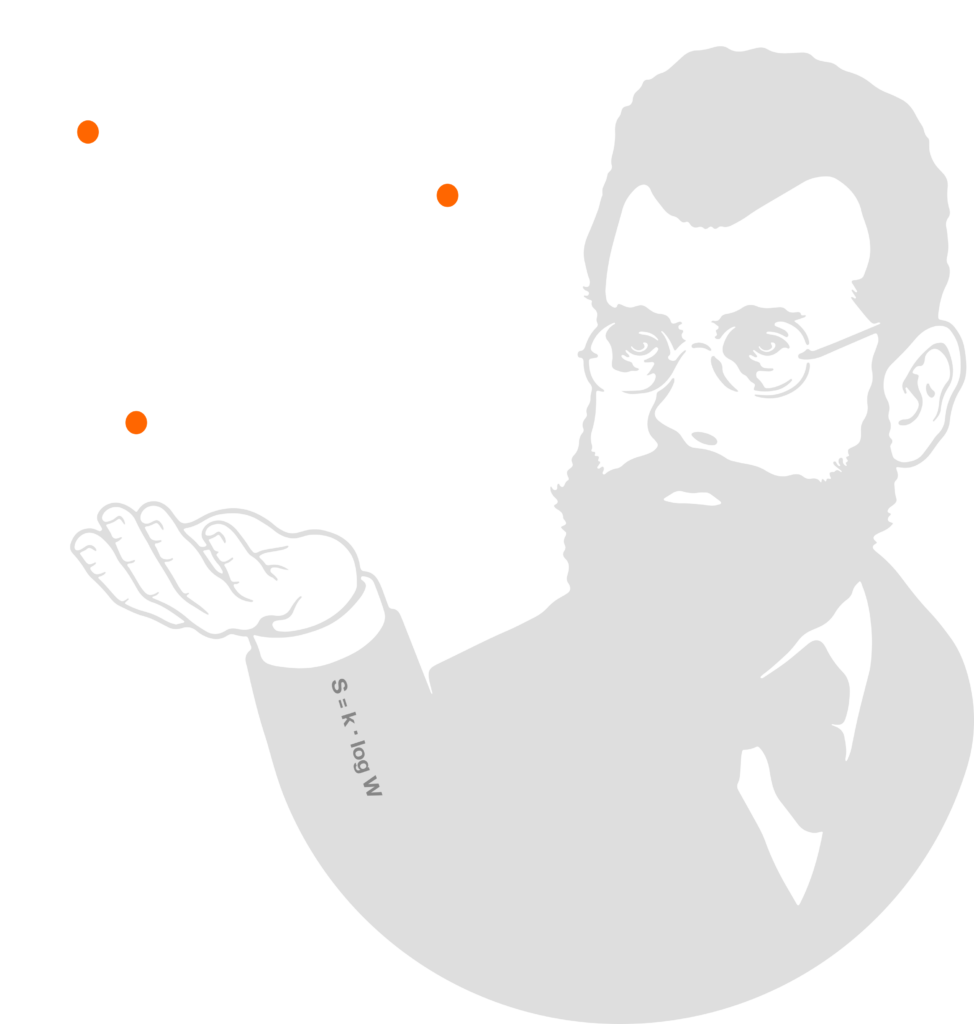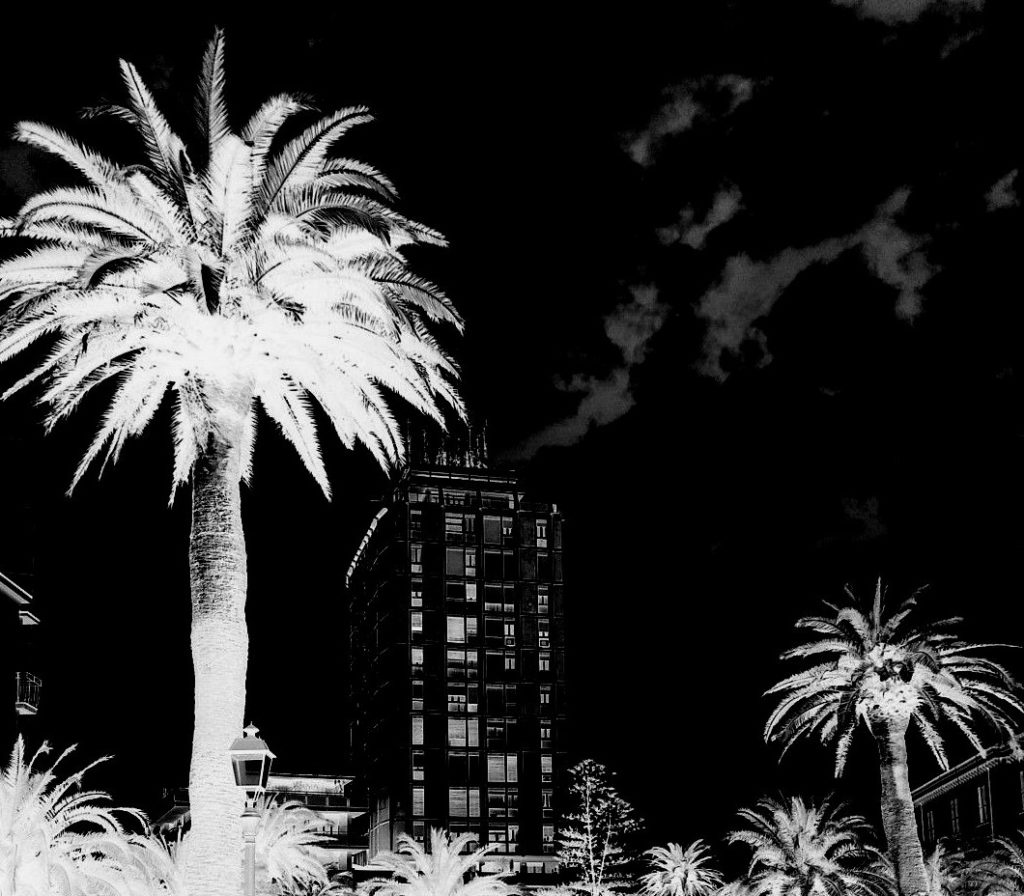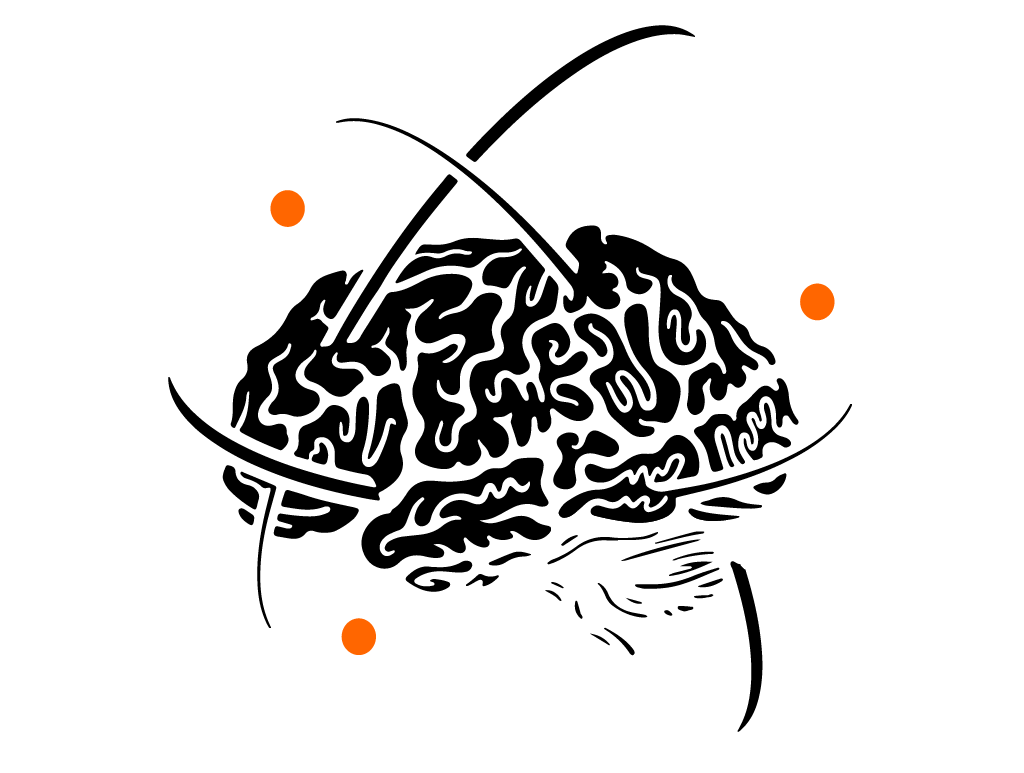Once upon a time there was a Boltzmann Brain* floating in space, all alone…and he dreamed of three guys: at first they were three theoretical chemists, but one day they became scientific game developers! This is the story of Boltzbrains in a nutshell!

In our academic life we deal with the secret life of atoms and molecules, in a strange world where there is no gravity, and things jiggle, rock and roll at incredible speed. A world where light comes as a storm of energy grains and many phenomena are under the weird spells of quantum mechanics. After exploring for years the microscopic labyrinths of porous crystals, the mesmerizing patterns of cellular automata, the uncharted cliffs and valleys of molecular energy landscapes, we realised how unfair it is that almost nobody outside of research laboratories knows of the beauty of the microscopic world. This is why we decided to bring it to you, as a virtual place to live and explore…and videogames turn out to be the perfect medium!
Our story
We all studied Physical Chemistry in Sassari, a quiet town not far from the sea in Northwestern Sardinia, an island in the middle of the Mediterranean Sea. We were all in love with the idea of becoming scientists since our childhood, and our curricula are in line with this. We are three friends, and shared the same small office at Sassari University for some ten years. Andrea and Alberto worked on similar research projects for their master’s degree, with the help of Federico, who was already undertaking his PhD studies at the time.

We are computational chemists, so our laboratory is not a real one, just a room with some powerful computers and usually good music in the air. By the way, Alberto and Federico played in the same indie rock band, so, after working on our daily molecular puzzles, we used to bury ourselves in a mouldy basement to play music. And for a few years Andrea and his metal band shared the very same mouldy basement, just a few hundred metres from the University. That was our little world for many years.
However after finishing our PhDs and a few years of working in academia, we were faced with the prospect of permanently leaving Italy in order to give our careers a chance. And we were not very excited by that idea. Travelling is fantastic, and living abroad for a few years really appeals to all three of us…but it’s better when you have a return ticket in your pocket. And this would have not been the case. So we came up with a Plan B. That’s Boltzbrains! We want to develop our personal approach towards science, and we are lucky enough that the only thing we need to do this is a computer. Our light bulb moment came with the realisation that we could create a whole digital world based on our research, and bring it to the public.
Many find it hard to acquaint themselves with so-called hard-sciences (math, physics and chemistry), and, even worse, they feel these are only technical and dry fields of study. Naturally we believe in the opposite, and the only reason for this is a communication problem at some level, so we’d like to build a bridge. While there are many excellent pop-science books on these topics, and even games, we feel that none of these fully convey the feeling of wonder that a first person experience of the vast realms unfolded by modern science could give. This is why we are working on our first videogame, where you can go for a walk after shrinking your size to one billionth of a metre. Well it’s not just a walk, it’s an adventure, with many dangers and mysteries. It’s called Maxwell’s Daemons and we’ll talk about this in a future post, where we are going to meet these bizarre creatures, in order for you to be prepared for the close encounters in the game.
*…and What is a Boltzmann Brain?
Poor old Ludwig Boltzmann (the bearded guy up there) is our intellectual hero. He was the first one to work out in details how the behaviour of a chaotic storm of atoms, bouncing off each other, gives rise to what we see in our macroscopic world, and in particular to Thermodynamics. Unfortunately he was ahead of his time and many of his colleagues opposed his ideas fiercely, in a time when the existence of atoms was not proven yet (obviously it was Einstein, as always, to find the proof!). Despite many of his ideas were proven to be right in the end, he killed himself in 1906, few months after Einstein’s paper. He was not 27, and not very handsome, but would deserve more posters and t-shirts in a better world! Among his most criticised ideas was his cosmological theory. His vision of the cosmos was quite close to that of Democritus, the Greek philosopher who first envisioned the existence of atoms: a restless chaos of particles whose random interactions are the only reason for the aggregation of worlds – and among others, the one we live in. It may sound strange that the casual motion of zillions of atoms can create the amazing complexity we see around us. But remember that, given an infinite amount of time, everything that is not forbidden, even if ridiculously improbable, must inevitably happen! So the story of the universe according to Boltzmann was that of eons of meaningless randomness, broken once in a while by a spark of order and structure, a Big Bang from time to time we would say today. But, hold on! It is true that the spontaneous aggregation of something like the universe we see is overwhelmingly improbable. However the birth of a single galaxy out of the wild atomic dance is certainly less improbable. And the assembly of a single solar system, or even better a single planet, is way more probable, and so on…the problem with this line of reasoning is that it leads to a single sensible conclusion: the most likely thing capable of generating a consciousness aware of what we call Universe, that can spontaneously assemble in this way, is…a single brain! A very creative one we must admit, if it is imagining – and feeling as real – things as wild and strange as galaxies, black holes, bipedal mammals capable of conceiving very weird ideas, and even videogames…
Of course, if you are reading these lines, that lonely Boltzmann Brain is you!
